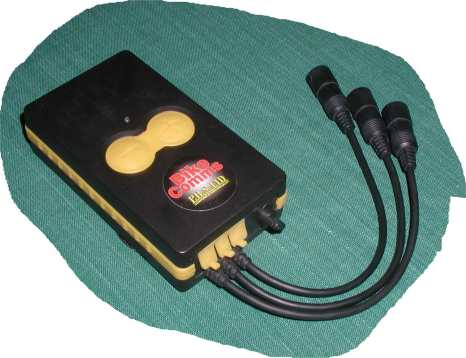
HINT: Read through this manual completely before you even touch the Motor Talkie.
Motor Talkie Motorcycle communication system (temporarily out of stock ! )
The Motor Talkie is a self contained sophisticated
microprocessor
controlled rider /pillion , bike to bike communication system and operates in
stereo in both the rider and pillion headsets , it enables one to talk to other
similarly equipped ( any bike to bike units) motorcycles using a UHF
CB transceiver (not supplied )
it comes supplied with :
-Two stereo earspeakers that velcro into the helmet and a boom
microphone ,
-MP3 input cable with 3,5 mm stereo right angle plug ,
-Cell-phone connection cable terminated in a right angle 2.5mm stereo
plug, (it must be "auto answer" phone)
-External cable for cigarette lighter socket power connection .
-Walkie talkie connection cable with Handlebar attached PTT button (
transceiver not supplied)
Ask your Motor Talkie supplier what type of walkie talkie to use with this
system as different models of handheld transceivers have different
external mic/earphone connection sockets that might not be
compatible with the cables supplied .see
below

They say a picture is worth a thousand words so I have
included a picture and a guide to operating the system
The control unit is a well made water resistant box
with dimensions 12mm thick 60mm wide and 120mm long.
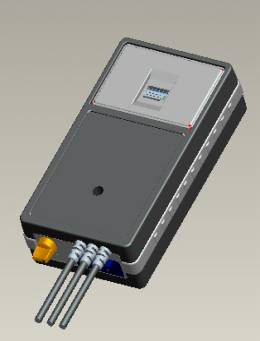
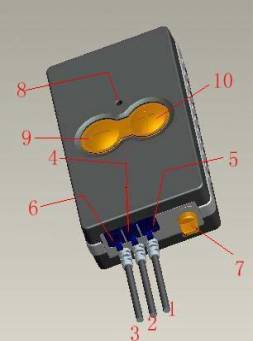
The control unit makes use of small water resistant ( not water proof) "Mini-Din"
polarised multi pin connectors . These must be connected carefully or you
will bend the pins. Before plugging together ,look at the socket and plug pins
to see you have the correct mating connection and rotational alignment
, then firmly press together . There is an arrow on the plug and
matching socket to assist correct alignment .
You have the option of connecting
the unit to your motor cycles existing 13.6 Volt system ( negative earth) or
place a pp3 9volt alkaline battery inside the compartment.
Features:
1.
helmet headset device (
rider
)
6. Power jack
2.
helmet headset device ( pillion
)
7. Volume control of microphone
3.
PTT / transceiver
8. Power indicator
4.
Mobile phone jack (2.5mm
)
9. Volume “-“
5.
CD/MP3 player jack (
3.5mm
stereo)
10. Volume “+”
Operation:
-
Connect the
control unit to an external power supply (6V-15) ie the motorcycle
electrical system (negative earth) . Be careful to observe the correct
polity as an incorrect connection can damage the unit and void the warranty, then by
plugging in either of the helmet headsets, it will automatically turn
the unit on
-
If you have inserted a 9volt battery into the unit , disconnecting the external power supply,
will cause the unit to automatically use the internal 9V battery .
- There is NO external OFF/ON switch ,the unit is automatically switched on when either helmet headset is plugged in , The red power indicator will illuminate
-
The Intercom
volume adjustment is the small black knob at the top, next to the three
input connection cables,
clockwise for full volume, there is NO switch function with this volume
control.
-
All other audio
inputs ie (Aux/CD/MP3/talkie’s) can be adjusted by pressing and holding
the + button or -- button on the front of the unit and releasing when the
required volume is achieved
Assuming the unit has a power supply
1.
Rider
Pillion function
-
Install the headsets into the helmet making sure the ear-speakers
are directly over the ears (this is important) position the microphone( next to
the mouth) on the helmet to find the best place for the microphone
attachment ,when satisfied THEN place the sticky velcro wool on the
surface of the helmet . Plug into the control unit , the
intercom function is immediately available ,set the operating volume with the small
volume control next to the cables.
2.
-
( Establish communications
between the two radios first,Set
the same channel (and CTCSS code if used ) ) set a comfortable listening volume on the
transceiver,
plug in the
helmet headsets (one or two), and the two way radio interface cable .
Connect PTT device to the left handgrip by way of the velcro straps, plug in
the interface cable into the transceiver ext headset plug .( you must have
the correct plug that matches the transceiver as there are over seven variations to
the transceiver external headset connection) , pressing the PTT button should enable you to talk
, releasing the button will enable you to listen.
For good communication range don't put the radio in your pocket but mount it up
out in the clear ,out in the open where the antenna will get a good clear
"view"
-
When the control
unit detects speech from the transceiver, the music will be
reduced in volume by 50% , Three seconds after the speech has ceased , the
music will resume to its original volume.
3.
Mobile
phone use
- Your phone must be able to "auto answer " with an external headset, and have a 2.5mm external headset socket. some phones need an adapter plugged into the bottom to enable this.( see your Moto Talkie supplier) Set your mobile phone to "automatic answer" mode as if using the external headset .
-
Connect the
mobile phone to the control unit by way of the supplied curly cable (2.5mm
stereo plug each end) a mobile-phone-serve-first system will be initiated
and connected
-
When the mobile
phone call is received, the caller message will be connected
directly to the headsets ( rider and pillion) and the other
audio systems operating will be disabled , 10 seconds after terminating
the mobile phone contact, the disabled audio functions will appear.
NOTE: If the
calling party does not speak for a time period of greater than 10
seconds the Motor-talkie assumes the call has ceased and turns the music
back on again . so make sure you don't monopolize the conversation or the
music will come back on .
Note: some Digital phones eg "Vodaphone" system phones can cause a "Buzzing" interference on the mototalkie , reposition the cellphone to minimize this RF pickup .
4.
Music
Input
-
Plug in CD/MP3
player into the 3.5mm socket , the driver and passenger can listen to music in
stereo!
- When the control unit detects speech from a headsets microphone, the music will be reduced in volume by 50% , three seconds after the speech has ceased , the music will resume its original volume.
Specifications :
DC input:
(9 v internal battery ( not supplied) operating time approx 7 Hrs continuous
use , 12V DC ext ,indefinite.
Frequency Response : MIC to Spk: 300-3400Hz CD to Spk:100-20KHz Walkie Talkie to/From Spk/Mic:
300-3400Hz
Operating
Temperature: 0-50℃
MotorTalkie Connections

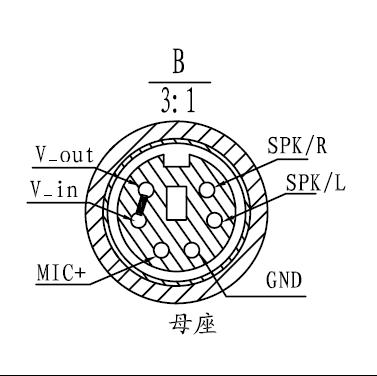
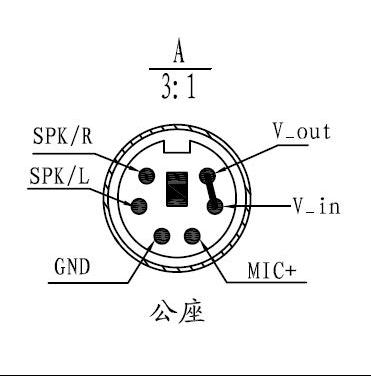
pin out Minidin
socket
Pin out Minidin Plug
Impressions
Just back from a 3 day ride on the Ol ' 850 Commando,
I had taken the newly modified Motor Talkie with me to test it out . I had my
Nokia 3230 cell phone ( with 2.5mm plug to base adapter) AM/FM radio for
music , bike to bike cable with GME TX610 walkie Talkie
unfortunately I did not have a pillion but I have previously checked that
and it was fine . I had set the cellphone to Auto answer with a headset
plugged in , I received a couple of calls and was very impressed , the
communicating party said i was clear as a bell with no problems hearing
me at 100 Kph The cell phone call drops the AM/FM music / walkie talkie
and it does not reappear for 10 seconds . This time period is for the
received voice of the calling party to keep the Motor-talkie active so it knows
to turn off the sound from the music and /or the walkie talkie . If the
calling party does not speak for a time period of greater than 10
seconds the Motor-talkie assumes the call has ceased and turns the music
back on again . so make sure you don't monopolize the conversation or the
music will come back on . I also noted that when you spoke into the mic ,the
music level dropped in volume and reappeared when you stopped
talking . The received signal from the walkie talkie causes the
music to stop too, and then reappear 3 seconds after the walkie talkie signal
has ceased. the volume can be adjusted by use of the two large waterproof plus
and minus buttons on the unit . I suspect the Motor-talkie is quite hungry on
power when all inputs are running I suggest for long term use, it not
be run on the internal PP3 Alkaline 9V battery but that the external
power cable be connected to the motorcycles 12v system . All in all a very
impressive system for the price !
These are some of the radios I have tried with the Motor-Talkie
Uniden 041 ( only in vox mode) Uniden/ 043/
047/ 060 / GME TX 610, 630 , Audioline PMR500. all in PTT mode
uniden 040/042/044 will not work with the motor talkie without a mic wire cross over mod to the radio attachment cable
plus postage ( heavy object, usually about NZ $20 to Australia and $10 around NZ)
Want to go back to Motorcycle communications? ...... click here!
Pinfold Health Services Ltd,1172 Arawa St, Rotorua 3201,New Zealand. ph +64-7-3488850 fax +64-7-3486555 pinfold@xtra.co.nz